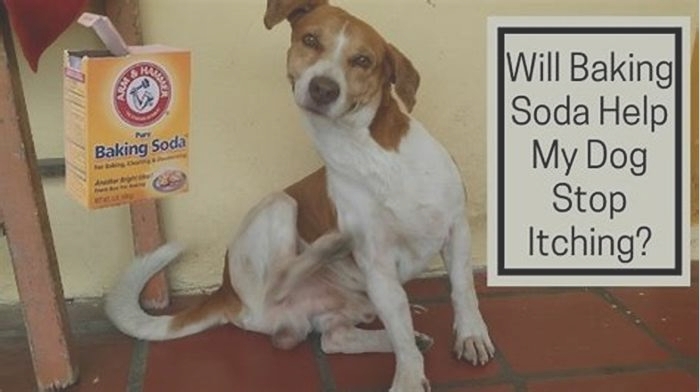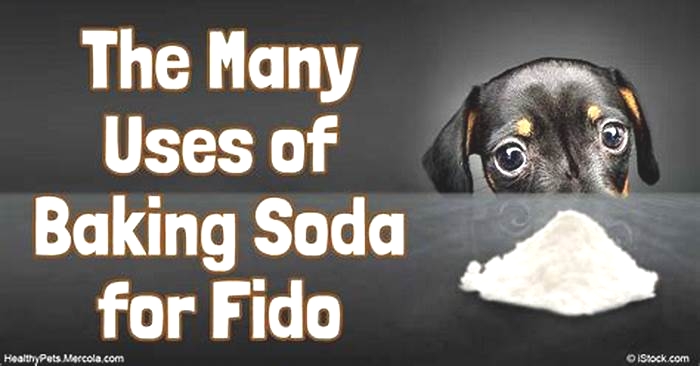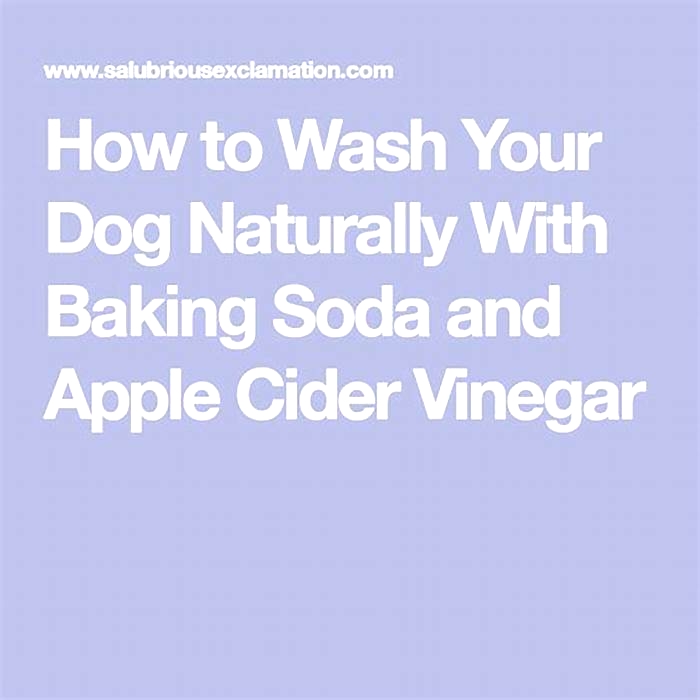How does baking soda help itching

Will Baking Soda Help My Dog Stop Itching
Just like other mammals with skin, dogs can fall victim to dry, itchy skin. As you can imagine, this can be very uncomfortable and painful for your dog, as they will be naturally inclined to scratch their skin, which usually only makes the problem worse. In todays article, we are going to discuss the different reasons why dogs have itchy skin, and we also will discuss whether you can use baking soda to soothe the itch.
Why do dogs get itchy all the time?
The main reasons dogs develop itchy skin is because of infections, fleas, and allergies. We will discuss each of these causes in depth below.
Infections
Skin infections are often times the cause of your dog developing dry, inflamed itchy skin. There are a wide range of skin infections that can cause itchy spots, such as yeast and bacterial infections. The key to treating a skin infection is to apply skin ointment and then cover up the inflamed areas. Your dog will be very tempted to itch at or bite these areas, so it is important that your closely monitor your dogs to ensure the bandage stays covering the itchy area. If your dog keeps chewing the bandage away, you can try putting a cone around their head.
Fleas
Fleas and other parasites such as ticks or worms are also another common cause of itchy skin for dogs. This is understandable, as fleas usually burrow their way into your cats skin, causing painful dryness and irritation of the skin. This is why it is important to always inspect your dog for fleas. We also recommend giving your dog a shampoo bath at least once a week if they live in a high flea environment. If you notice that your dog has already been infested by fleas, we recommend taking him/her to the vet as soon as possible. The vet will likely prescribe your dog some topical flea solution which should help get rid of the fleas. In some extreme cases, your vet might prescribe your dog antibiotics if they fear the fleas have caused an infection.
Allergy
Allergies are also a common cause of itching in dogs. The two most common allergies affecting dogs are food and environmental allergies. As you would probably guess, food allergies are directly tied to your dogs diet. Your dog can develop food allergies to just about any form of dog food. If you suspect your dog is suffering from food allergies, we recommend completely switching their diet for one month. You should also avoid giving your dog treats, as this can also be the source of the allergy. Environmental allergies refer to any substance in your dogs environment that triggers an allergic reaction. There are hundreds of different allergens that can be causing your dogs itching, but the most common are pollen, mold, and dust. While pollen is almost impossible to avoid, there are measures you can take to protect you dog from mold and dust. Make sure that you regularly clean the areas of the house that your dog frequents. If you have a cat, you should look into buying dust free cat litter.
Will baking soda help my dog stop itching?
Yes, baking soda is a great way to help your dog stop itching. The best way to apply baking soda to your dog is by combining it with water to make a paste like solution. You should measure the baking soda into a cup, and then pour in the same measure of water. For example, if you have one cup of baking soda, you should pour in one cup of water. After mixing and making the paste, you should apply it directly to the area that is itching. The baking soda solution will help sooth the itching and will also reduce inflammation. Make sure to rinse the baking soda off after 20 minutes. You can also add baking soda to your dogs bath to help them stop itching.
Home Remedies: Help with itchy hives
Featured News
Home Remedies: Help with itchy hives

If your symptoms are mild, you may not need treatment. Many cases of hives and angioedema clear up on their own. But treatment can offer relief for intense itching, serious discomfort or symptoms that persist.
If you're experiencing mild hives or angioedema, these tips may help relieve your symptoms:
- Avoid triggers.These can include foods, medications, pollen, pet dander, latex and insect stings.
- Use an over-the-counter anti-itch drug.A nonprescription oral antihistamine, such as loratadine (Claritin), cetirizine (Zyrtec Allergy) or diphenhydramine (Benadryl Allergy, others), may help relieve itching.
- Apply cool, wet compresses.Covering the affected area with cool, moist bandages or dressings can help soothe the skin and prevent scratching.
- Take a comfortably cool bath.To relieve itching, sprinkle the bath water with baking soda, uncooked oatmeal or colloidal oatmeal a finely ground oatmeal made for bathing (Aveeno, others).
- Wear loose, smooth-textured cotton clothing.Avoid wearing clothing that's rough, tight, scratchy or made from wool. This will help you avoid skin irritation.
Medications
Treatments for hives and angioedema may include prescription drugs:
- Anti-itch drugs.The standard treatment for hives and angioedema is antihistamines, medications that reduce itching, swelling and other allergy symptoms.
- Anti-inflammatory drugs.For severe hives or angioedema, doctors may sometimes prescribe an oral corticosteroid drug such as prednisone to reduce swelling, redness and itching.
- Drugs that suppress the immune system.If antihistamines and corticosteroids are ineffective, your doctor might prescribe a drug capable of calming an overactive immune system.
- Drugs that reduce pain and swelling.Chronic hives and angioedema may be treated with a type of nonsteroidal, anti-inflammatory medication called leukotriene antagonists.
- Blood protein controllers.If you have hereditary angioedema, a variety of medications can regulate levels of certain blood proteins and relieve your signs and symptoms.
Emergency situations
For a severe attack of hives or angioedema, you may need a trip to the emergency department and an emergency injection of epinephrine a type of adrenaline. If you have had a serious attack or your attacks recur, despite treatment, your health care provider may have you carry a pen-like device that will allow you to self-inject epinephrine in emergencies.
This article is written byMayo Clinic staff.Find more health and medical information onmayoclinic.org.
Related post:Mayo Clinic Q and A: Chronic hives come and go with no clear pattern
What are the benefits of a baking soda bath and how to do it
Baking soda is a household staple with many different uses. Adding a quarter cup of baking soda to a lukewarm bath and soaking for up to 40 minutes may relieve itching, irritation, or infections or just provide a detox.
Adding baking soda also known as sodium bicarbonate to a bath may help with a range of conditions, such as:
- eczema
- psoriasis
- yeast infections and other fungal infections
- diaper rash
- urinary tract infections (UTIs)
- damaged skin due to surgery, hemorrhoids, and other factors
This article looks at the benefits of a baking soda bath and how taking one may help. We also examine some other types of detox baths and their uses.
What is a baking soda bath?
Baking soda is a mixture of sodium ions and bicarbonate ions. It dissolves fully in water, and people commonly add it to oral hygiene and cleaning products as it may help remove bacteria, odors, and acidity.
These properties may also be helpful for the skin, especially if a person has certain skin conditions.
Even without adding baking soda to the water, soaking in a warm bath may have valuable therapeutic properties by warming a persons muscles and helping them relax after a stressful day.
A warm or hot bath can also promote sweating.
10 benefits of a baking soda bath
A baking soda bath can be beneficial for many conditions, including:
1. Yeast infections
Many people experience yeast infections, but some symptoms, such as itching and swelling, can often make it difficult for a person to go about their daily activities. A baking soda bath may relieve symptoms and help people recover faster.
A
2. Fungal skin and nail infections
Older 2012 research suggests that baking soda may be useful as an antifungal agent against many fungal strains that commonly affect skin and nails.
People with the nail fungus onychomycosis, which causes thick, discolored, or crumbly nails, may find relief from regularly soaking their hands or feet in a baking soda bath.
However, anyone with a fungal infection should ask their doctor if a baking soda bath can help relieve symptoms.
3. Eczema
Eczema causes dry, itchy, and inflamed patches of skin to develop on the body during flare-ups. These areas may be so itchy that a person scratches and breaks the skin, leaving it prone to infection and worsening symptoms.
Baking soda may help prevent eczema flare-ups or reduce symptoms in some people. Adding a quarter cup of baking soda to a warm bath may help soothe itchy skin.
It is important to pat the skin dry and moisturize immediately after the bath.
4. Psoriasis
There is
Adding both baking soda and oatmeal to a bath may reduce irritation and itchiness.
It is essential to moisturize the skin immediately after drying off with a towel, as hot water can dry out the skin further.
5. Poison ivy, poison oak, or sumac
Baking soda may also promote the healing of rashes caused by touching poisonous plants.
Taking a bath after touching toxic plants is a good idea, as bathing can wash off the oils that cause a rash, reducing the amount the skin absorbs.
A bath may also help prevent these oils from spreading to other areas of the body or transferring to another person.
Baking soda can soothe inflamed skin and reduce irritation and itching. Soaking in a lukewarm or cool tub with baking soda may
6. UTI
A UTI causes pain and burning while urinating due to extra acidity in the urinary tract.
Although a baking soda bath will not change the acidity of the urine, it may reduce pain and discomfort alongside doctor-prescribed antibiotics.
Research from 2018 suggests taking baking soda by mouth may also
Learn more about baking soda and UTIs.
7. Diaper rash
Diapers are damp and warm, making them the perfect place for pathogens to multiply.
This can result in a rash on the skin called a diaper rash. Constant friction from the diaper can also irritate the skin.
A baking soda bath can help remove the pathogens that cause irritation and soothe sensitive skin.
For babies and small children, it is essential only to use a minimal amount of baking soda, as the skin can absorb dissolved baking soda.
For severe diaper rash, a person can add 2 tablespoons of baking soda to a warm bath and soak the affected area for 10 minutes, three times a day. After soaking, they should apply a topical anti-yeast ointment. A doctor can recommend a suitable preparation.
Learn about adult diaper rash and how to manage it.
8. Chickenpox
The constant itching and irritation caused by chickenpox can feel extremely uncomfortable for many people, especially children.
A baking soda bath may provide the relief they need. Soaking in lukewarm water with 1-quarter cup of baking soda may relieve itching, according to the Seattle Childrens Hospital.
Adding ingredients such as oatmeal or chamomile tea may also reduce symptoms.
Learn more about home remedies for chickenpox.
9. Vulva irritation
Some females commonly experience irritation and itching around the vulva.
To relieve burning and itching, a person can add 45 tablespoons of baking soda to a bath and soak for 10 minutes up to three times a day. For a sitz bath, they should use 12 teaspoons of baking soda.
10. Hemorrhoids and other causes of pain and discomfort
A baking soda bath may help relieve irritation and pain from ulcerated, cracked, raw, or blistered skin around the anal or vaginal area or the scrotum.
This can be due to:
A person can add 0.51 tablespoon of baking soda to lukewarm water in a sitz bath and soak for 1015 minutes. Alternatively, they can add 12 teaspoons of salt to the water.
Detox baths
Even without an underlying condition to treat, a baking soda bath may be a helpful way to promote overall well-being.
To do this, a person can try adding the following to a bath:
- one-third of a cup of baking soda
- one-third of a cup of sea salt
- one-third of a cup of Epsom salts
People may also wish to add medicinal herbs or essential oils, such as eucalyptus or lavender, to help the body sweat and relax.
What is an Epsom salt detox?
How to use a baking soda bath
To make a baking soda bath, a person can add between a quarter and 2 cups of baking soda to warm bath water and stir it around to let it dissolve.
Once the baking soda has completely dissolved, a person can soak in the tub for up to 40 minutes. After the bath, they should pat the skin dry with a towel and use a natural oil or lotion to moisturize the skin.
Other tips for before and after the bath include:
- creating a relaxing environment by using candlelight or soft music
- using a dry scrub, loofah, or body brush before the bath to help shed dead skin cells
- using lukewarm-to-warm water if hot water dries out the skin
- using mild soap and warm water to rinse away any toxins left on the skin
- wearing clean clothes after a bath to avoid additional environmental toxins
Risks and considerations
Baking soda baths are typically safe, but consuming too much baking soda can raise levels of both sodium and bicarbonate.
Baking soda changes the pH of body fluids. In large amounts, it can lead to:
If a child swallows baking soda, people should contact the emergency services or their local poison control center for immediate assistance.
The skin can also absorb dissolved baking soda, including during a baking soda bath.
People should avoid baking soda baths if they:
Some people may have a skin reaction to baking soda. It is best for a person to test the effects on a small patch of skin before taking a baking soda bath.
Learn about the dangers of drinking baking soda.
Other types of baths
People can use many other natural ingredients in a bath, including:
Baking soda is sometimes added to salt baths to help support their effects, but people should discuss this with a healthcare professional first.
Is sea salt better than table salt?
Other uses for baking soda
As well as in a bath, people can also use baking soda for:
- teeth whitening
- skin exfoliation
- deodorant
- foot soaks
- dry scalp relief
Summary
As with any treatment, it is important for a person to talk with a doctor before using baking soda baths to treat an underlying health condition.
Doctors may want to monitor how the skin reacts. They may also be able to offer safety tips or recommend some alternative treatments to try. Anyone with symptoms that persist or worsen should contact a doctor.









